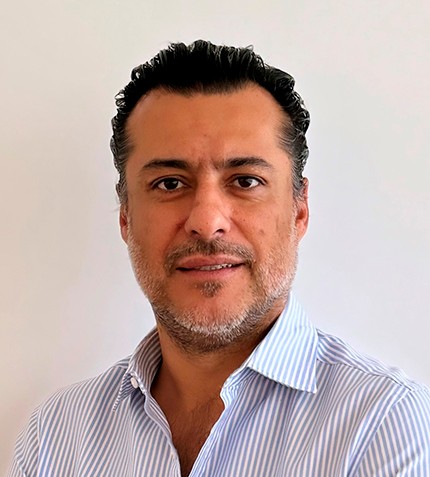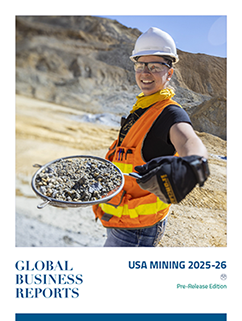
"In 2019, we established a JV between Titanobel and Max Group to develop explosive production and blasting services for Mongolia’s mining sector."
Soyol-Erdene Tsegmid
CEO, TITANOBEL MONGOLIA
Titanobel Mongolia was established in 2019. Could you walk us through the beginnings of the company in the country?
We Mongolians think of Mongolia as a mining country, but, on the global map, we play a very small role. Mongolia is the 19th largest country by territory, and this vast land remains very little explored. Few world-class deposits have been discovered in recent years. During Mongolia’s economic boom between 2009 and 2013, when GDP growth reached 17%, the likes of Rio Tinto or BHP were looking at the country’s vast mineral potential, creating demand for support services like blasting. Maxam was initially contracted by Oyu Tolgoi for several years, and then Orica took over.
In 2018, I had a meeting with the CEO of Titanobel, Mr Frederic Mey. The mining industry had dwindled significantly since the boom years, and it was not easy to encourage foreign companies to invest in the sector. But in 2019, we established a JV between Titanobel and Max Group (where I was working) to develop explosive production and blasting services for Mongolia’s mining sector.
As part of that development, we acquired Nitrosibir Mongolia, a small company with a well-established presence in the local explosives market, and we started design works for our emulsion explosives plant, but the pandemic and ensuing border restrictions prevented us from importing the plant modules, so we relied on the production from the Nitrosibir plant to maintain supply. Between 2020 and 2022, we built our human resource capabilities and, as soon as borders reopened at the end of last year, we commissioned the plant. This year, the plant came online in full production and we began work at Max Group’s gold mining project (Khan Altai Resources) in Western Mongolia, capitalizing on the synergies with one of our parent companies. The global merger between Titanobel and Dyno Nobel last year also gave the Mongolian business a boost, marrying Titanobel’s expertise with Dyno Nobel’s explosives capabilities, since Dyno Nobel belongs to the largest ammonium nitrate producer in Australia (Incitec Pivot IPL).
What is Titanobel’s growth strategy as the new player in the Mongolian market?
Our plant is in Nalaikh, which is about 40 km away from Ulaanbaatar, so by having a plant in central Mongolia, we can serve mines across the country, whereas our competitors have built their production close to certain mining sites. From our centralized plant, we can transport non-explosive emulsions to mining sites and couple these emulsions with on-site charging trucks. We are now advancing this concept by building tank storage for explosives at our customers’ bases.
Could you elaborate on the technologies that differentiate Titanobel?
We have an opportunity to bring electronic detonators into Mongolia. Detonators are always the riskiest part of blasting because these are charged by engineers based on the bench; with one blast, hundreds or thousands of holes are charged in a sequence, so if something wrong happens with the connection, people on the ground are at risk. Electronic detonators are paving the way in terms of new blasting technologies since operators can remotely control the blast from a safe distance (500 meters).
How do you manage the supply chain of raw materials in Mongolia?
Mongolia is sandwiched between two big countries, which impacts us in many ways. The sanctions applied on Russia have curtailed the supply of raw materials, while the prolonged lockdown in China restricted port permissions making it difficult to transport explosives. Titanobel operates various routes to make our supply chain stable. We are now using air cargo to bring in detonators from Turkey to Mongolia, which, although more expensive, is the best solution to maintain a resilient inventory. We are also looking at a new lane through Kazakhstan, but the fact that we do not share a common border means we still need to briefly pass through either Russia or China. Then, from Australia, we are shipping into Tianjin port in China and then road hauling into Mongolia.
Do you have a final message for our international readers?
Mongolians think of Mongolia as a mining country, so my hope is that the rest of the world will also see Mongolia as an important mining player. For that, we need more exploration and discoveries. There are more deposits the size of the Oyu Tolgoi, we just need to find them.










